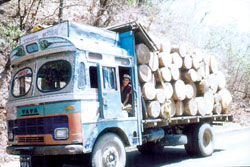|
|
The history of development planning in Nepal makes for depressing reading. The idea of planned development was introduced in 1956 with the first of many five-year plans.
It assumed that the state was unitary, development was a problem with a technical solution and the growth model was best suited to us. So, we set about decimating our forests and invested in physical infrastructure emphasising the primacy of the state in economic decision-making. When King Mahendra staged his coup in 1960, he declared that he would deliver in a decade what other countries had taken centuries to achieve. He wanted to create an all-new civilisation with the crown at the top. With his edifice complex, he created towns by diktat and sought to populate them with hardcore loyalists. He supervised the mass transmigration from the hills to the plains. Within 20 years, the thick hardwood forests of the Charkose Jhadi were nearly gone and the newly malaria free inner tarai was filled with new hill settlers.
King Birendra introduced the element of space in national economic planning. With the help of geographer Harka Gurung, unitary control over the far-flung areas of Nepal was consolidated through regional centres. This approach was slightly modified during the post- referendum reformation exercises and 'Growth Corridors' tried to encourage private investment.
The 1990 People's Movement changed the politics but didn't question the development paradigm. In 1991, 46.7 percent of Nepal's population lived in the tarai, by 2001 the proportion was 48.4 percent. Planning dogmas are hard to discard. Whenever regional imbalance is discussed in Nepal, almost no attention is paid to the deliberate and unplanned transmigration of people from the hills to the tarai. Even less attention was paid to the expansion of urban centres and they spread like malignant growths.
Jibgar Joshi has been involved in the physical planning of towns in Nepal for nearly three decades. Trained as an engineer, he later specialised in economics and urban planning. He has been a part of its remarkable successes (huge expansion in infrastructure and services) and spectacular failures (marginal change in national income, very little improvement in social justice and ineffective poverty reduction strategies) and is in a position to suggest corrective measures now that he has taken voluntary retirement from the government. Unfortunately, he does no such thing. He seems to be quite happy chronicling the events and recording trends in regional strategies and sustainable development.
The book lacks a central thesis. It doesn't question any of the fundamental beliefs of development planning in Nepal (the unitary model of infrastructure planning, growth model of economic development, development as a technocratic issue, the desirability of foreign aid and the centrality of the state) and suggests minor changes in detail to improve their effectiveness.
We need a fresh approach to make the politics and economics of this country more responsive to its real needs. If this book serves a purpose, it is to raise more questions than it tried to answer. Last week, Nepal's population crossed 27 million and it will double in the next 25 years.
Just that projection alone should send shivers down the spines of planners. How are we going to plan for this: the jobs needed, the food to be grown, the towns accommodated, the hospitals, schools and homes built? Who will control the rage of the disadvantaged? If nothing else, this book reminds us that time is running
out.
CK Lal
Regional Strategies for Sustainable Development in Nepal
Jibgar Joshi
ISBN: 99933-945-0-5
Pages: 156+viii
Price: Rs 400



